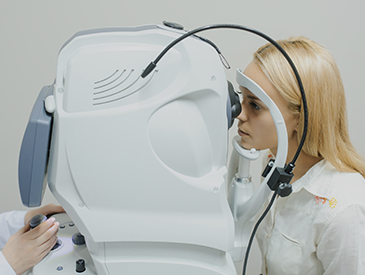How Are Cataracts Diagnosed and Treated?
Blog:How Are Cataracts Diagnosed and Treated?

How Are Cataracts Diagnosed and Treated?
How Are Cataracts Diagnosed and Treated?
Cataracts are a common eye condition, particularly among older adults, where the natural lens of the eye becomes cloudy, leading to blurred or diminished vision. Left untreated, cataracts can significantly impair your ability to see clearly. Fortunately, cataracts are treatable, and with timely diagnosis, you can maintain or restore your vision.
How Are Cataracts Diagnosed?
Diagnosing cataracts typically involves a comprehensive eye examination. Your optometrist at Texas State Optical will conduct several tests to evaluate the health of your eyes and determine if cataracts are affecting your vision.
Visual Acuity Test
The first step in diagnosing cataracts is a visual acuity test. This common test involves reading letters on a chart at varying distances to assess how well you can see. If your vision is impaired, it could be due to cataracts or other conditions, and further tests will be conducted to pinpoint the cause.
Slit-Lamp Examination
A slit-lamp examination allows your optometrist to get a closer look at the structures at the front of your eye, including the lens, cornea, and iris. The slit lamp uses a bright light and magnification to detect abnormalities, including the clouding caused by cataracts.
Retinal Exam
To examine the back of your eye (the retina), your optometrist will dilate your pupils using special eye drops. Once dilated, the retina can be seen more clearly, allowing your doctor to detect any cataracts or other issues affecting the lens.
Tonometry Test
Although primarily used to check for glaucoma, a tonometry test measures the pressure inside your eye. While this test doesn't directly diagnose cataracts, it's an essential part of a comprehensive eye exam to rule out other conditions that may affect your vision.
How Are Cataracts Treated?
The good news is that cataracts are treatable. Once diagnosed, your optometrist will discuss your treatment options based on the severity of your condition. In the early stages of cataracts, simple adjustments can often improve your vision. As cataracts progress, surgery becomes the most effective solution.
For mild cataracts, prescription glasses or contact lenses can help improve your vision. These corrective measures enhance clarity and reduce the effects of early-stage cataracts. However, they only offer temporary relief as cataracts continue to progress over time.
When cataracts begin to significantly affect your vision and daily life, cataract surgery is the most effective treatment. This is a safe and commonly performed procedure that removes the clouded natural lens and replaces it with an artificial intraocular lens (IOL).
Schedule Your Eye Exam with Texas State Optical Today
If you’re experiencing blurry vision, trouble seeing at night, or increased sensitivity to light, these may be signs of cataracts. Early detection and treatment are key to preserving your vision. Regular eye exams at Texas State Optical allow your optometrist to monitor changes in your vision and recommend treatment as necessary.
If you're concerned about cataracts, schedule an eye exam with Texas State Optical for a thorough evaluation and personalized treatment plan. Contact our office in Texas City, Texas, by calling (409) 202-6984 to book an appointment today.


